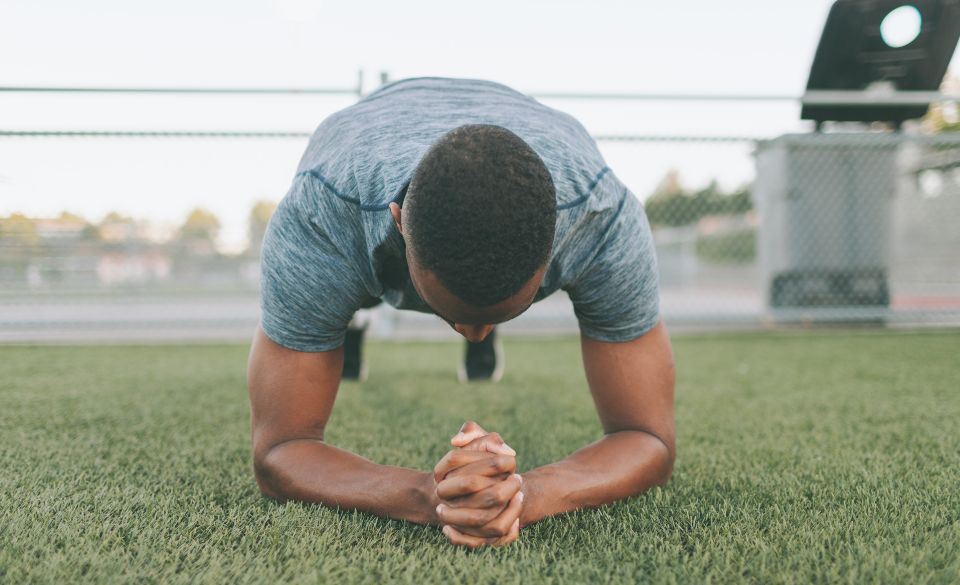
5 Strength & Conditioning Exercises For Runners
Page Contents
Running is a fantastic cardiovascular exercise that helps improve endurance and cardiovascular fitness. However, to become a stronger and more resilient runner, it’s important to incorporate strength and conditioning exercises into your training routine. Strength and conditioning exercises not only enhance your overall performance but also help prevent injuries. In this blog post, we’ll share five effective exercises specifically designed for runners. Incorporating these exercises into your routine will help you build strength, improve running efficiency, and stay injury-free.
The Benefits of Strength and Conditioning for Runners
Before diving into the exercises, let’s explore the benefits of strength and conditioning training for runners:
1.Improved running economy: Strength training helps improve running economy by enhancing muscular power and efficiency. Stronger muscles can generate more force with each stride, allowing you to maintain a faster pace with less effort.
2.Injury prevention: Building strength in key muscle groups can help prevent common running injuries, such as shin splints, IT band syndrome, and runner’s knee. Strengthening your muscles and improving stability and balance will support your joints and reduce the risk of overuse injuries.
3. Enhanced endurance: Strength and conditioning exercises improve muscular endurance, enabling you to maintain good form and technique for longer periods during your runs. This translates to improved performance and the ability to maintain a steady pace over longer distances.
4. Increased power and speed: By incorporating explosive exercises into your training, such as plyometrics, you can develop power and speed. This can be beneficial for sprint finishes or surges during races.
5. Overall fitness: Strength and conditioning exercises contribute to your overall fitness and well-being. They improve bone density, promote better posture, and increase overall body strength and stability.
5 Strength & Conditioning Exercises For Runners
Now that we understand the benefits, let’s explore five essential strength and conditioning exercises for runners.
1. Squats
Squats are a fundamental exercise for building lower body strength, targeting the quadriceps, hamstrings, and glutes. They also engage the core muscles, promoting overall stability and balance.
To perform squats correctly, stand with your feet shoulder-width apart, toes slightly turned out. Engage your core, keep your chest lifted, and lower your hips down as if you’re sitting into a chair. Lower until your thighs are parallel to the ground, then push through your heels to return to a standing position. Aim for three sets of 10-12 reps.
2. Lunges
Lunges are excellent for targeting the major muscle groups in your lower body, including the quadriceps, hamstrings, glutes, and calves. They also help improve balance and stability, crucial for maintaining proper running form.
Start by standing with your feet hip-width apart. Take a big step forward with your right foot and lower your body until both knees are at a 90-degree angle. Push through your right heel to return to the starting position. Repeat with the left leg. Aim for three sets of 10-12 reps on each leg.
3. Plank
The plank exercise is a core-strengthening exercise that engages multiple muscle groups, including the abs, back, and glutes. A strong core is vital for maintaining proper running posture and reducing the risk of lower back pain.
To perform a plank, start in a push-up position with your forearms on the ground. Keep your body in a straight line from head to toe, engaging your core muscles. Hold this position for 30-60 seconds, focusing on maintaining proper form and breathing deeply.
4. Single-Leg Deadlifts
Single-leg deadlifts are an excellent exercise for developing stability and balance while targeting the hamstrings, glutes, and lower back. They mimic the single-leg movement pattern of running and help correct muscle imbalances.
Stand with your feet hip-width apart and shift your weight onto your left foot. Keeping a slight bend in your left knee, hinge at your hips, and lower your upper body while lifting your right leg behind you. Keep your back straight and your right leg in line with your body. Return to the starting position and repeat on the other leg. Aim for three sets of 10-12 reps on each leg.
5. Calf Raises
Strong calf muscles are essential for running, as they help propel you forward and provide stability. Calf raises are a simple yet effective exercise to target the calf muscles.
Stand with your feet hip-width apart and slowly rise up onto the balls of your feet. Hold for a moment, then lower your heels back down to the ground. For an extra challenge, try doing the exercise on one leg at a time. Aim for three sets of 15-20 reps.
Additional Tips and Considerations
While the five exercises mentioned above are essential for building strength and conditioning, there are a few additional tips and considerations to keep in mind as you incorporate them into your training routine:
– Progress gradually: Start with lighter weights or bodyweight exercises and gradually increase the intensity and resistance over time. This progressive overload helps stimulate muscle growth and prevents plateauing. Listen to your body and avoid pushing yourself too hard, especially if you’re new to strength training.
– Proper form is key: Focus on maintaining proper form during each exercise. This ensures that you’re targeting the intended muscles and reduces the risk of injury. If you’re unsure about the correct form, consider working with a qualified fitness professional to guide you.
– Recovery and rest: Allow your body adequate time to recover between strength training sessions. Muscles need time to repair and grow stronger. Aim for at least one or two days of rest between sessions, depending on your fitness level and recovery capacity.
– Balance and variety: Incorporate a variety of exercises to target different muscle groups and prevent muscle imbalances. Include exercises that focus on your upper body, such as push-ups or dumbbell rows, to achieve overall body strength and balance.
– Consistency is key: Consistency is crucial for seeing results. Aim to incorporate strength and conditioning exercises into your training routine at least two to three times per week. Consistent practice will help you build strength and endurance over time.
Studies Supporting Strength and Conditioning for Runners
Numerous studies have demonstrated the benefits of strength and conditioning exercises for runners. Here are a few notable ones:
– A study published in the Journal of Strength and Conditioning Research found that strength training improves running economy and time trial performance in endurance runners.
– According to research published in the Scandinavian Journal of Medicine & Science in Sports, strength training can reduce the risk of running-related injuries by improving muscle strength and enhancing joint stability.
– A study published in the Journal of Orthopaedic & Sports Physical Therapy concluded that a combination of strength and plyometric exercises can improve running performance, particularly in terms of speed and power.
These studies emphasize the importance of incorporating strength and conditioning exercises into your training routine as a runner. By including these exercises, you can enhance your running performance, reduce the risk of injuries, and promote overall fitness and well-being.
Final Words – Strength & Conditioning Exercises For Runners
Incorporating strength and conditioning exercises into your training routine is crucial for becoming a stronger and more resilient runner. By targeting key muscle groups, improving running economy, preventing injuries, and enhancing overall fitness, you’ll be able to reach new levels of performance and enjoy your running even more. Remember to start with proper form, gradually increase the intensity, and listen to your body to avoid overexertion. By dedicating time to strength and conditioning exercises, you’ll reap the rewards on your next run.




